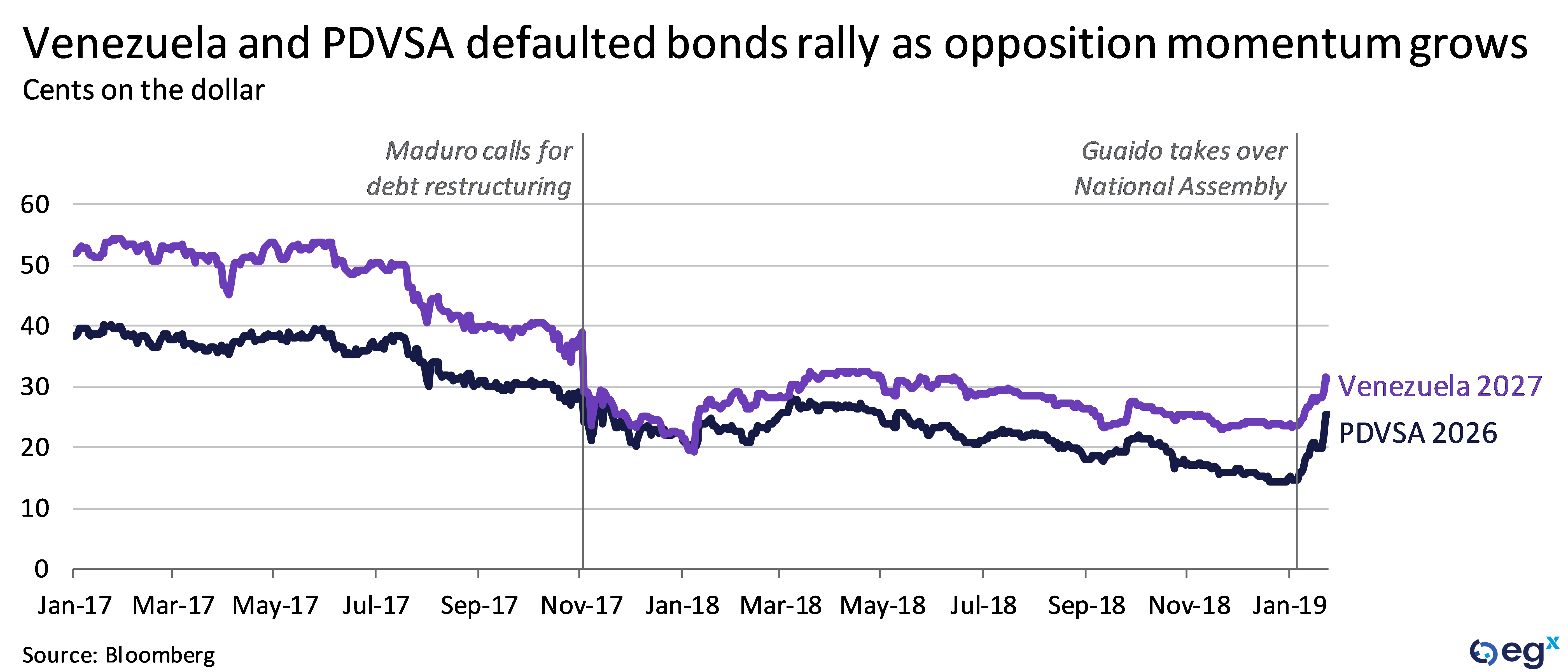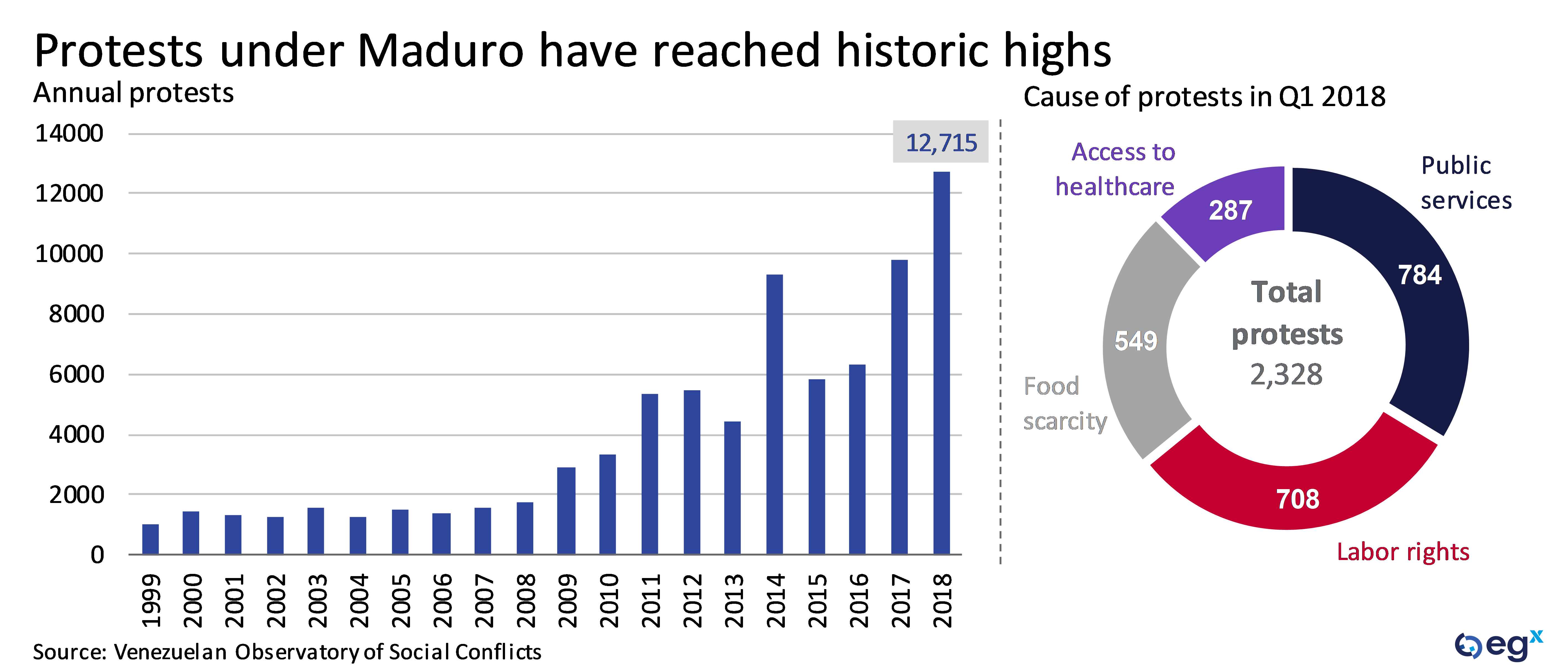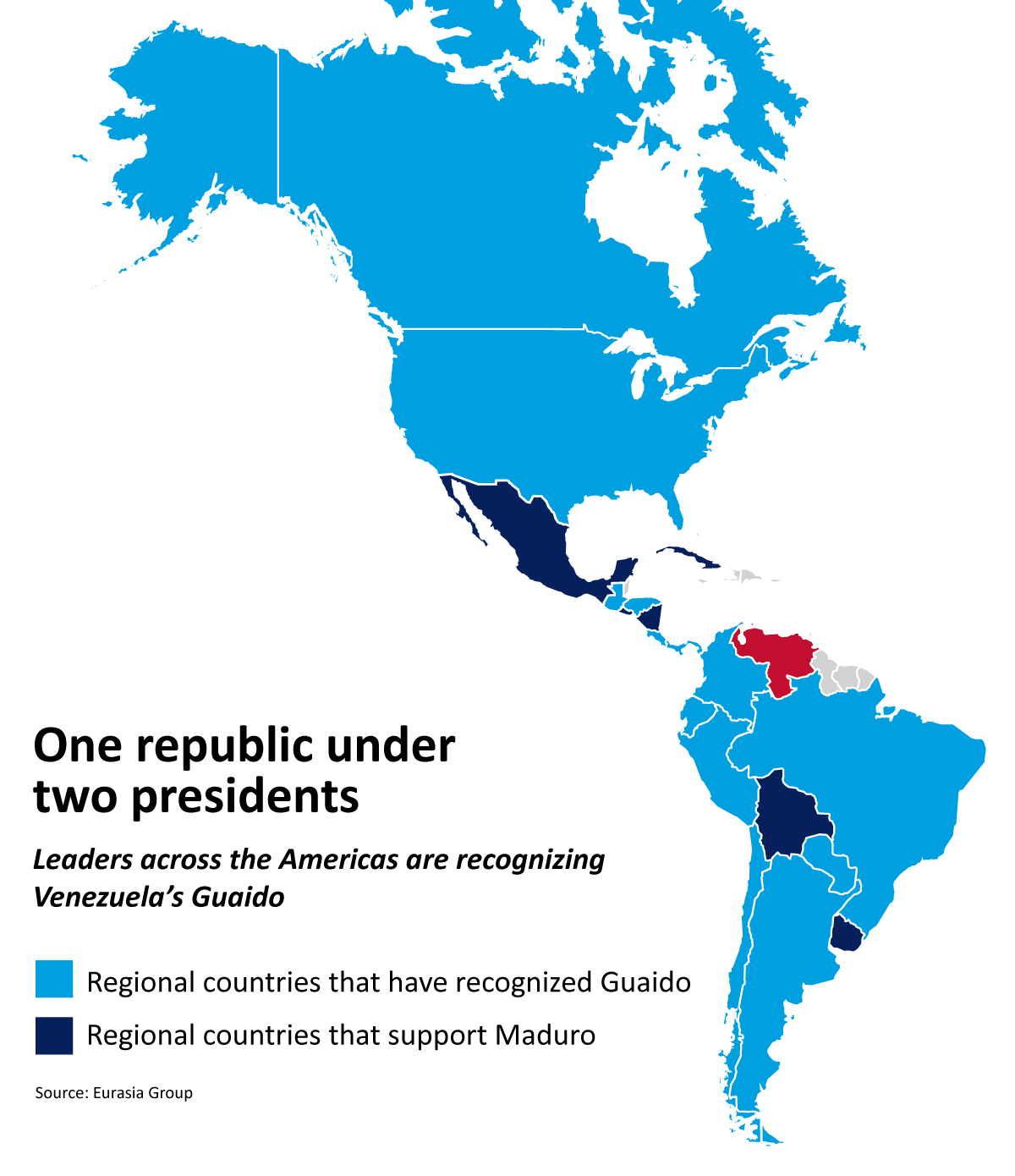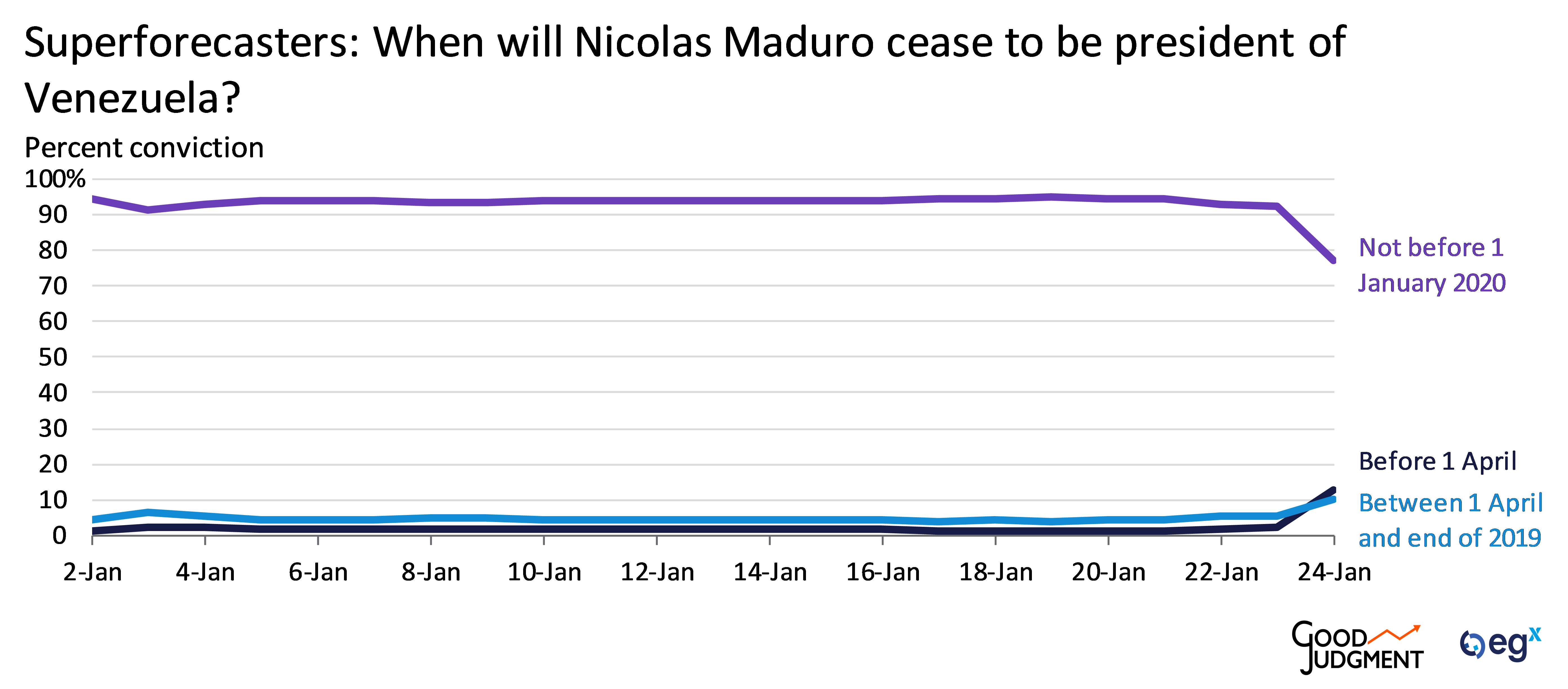President Nicolas Maduro is in a precarious position despite having been inaugurated for a second six-year term on 10 January. With rising societal tensions and the coalescing of the opposition around self-appointed President Juan Guaido, the president's grip on power is tenuous.
Venezuela's economy continues to deteriorate
Venezuela's economy is among the world's worst. Attempts by the government to meet its external debt obligations have failed, leaving the country in technical default, and the IMF estimates that inflation will reach 10,000,000% in 2019. Over 3-million Venezuelans have fled their home country.
 A new hope
A new hope
While regime change is not necessarily imminent, pressure is mounting on the Maduro administration. A new opposition leader, Juan Guaido, was elected president of the National Assembly on 5 January and shortly thereafter began calling for a parallel government. Guaido was briefly detained by the Venezuelan government in a move that only bolstered his support within the international community.

The Maduro-led government recently suppressed an insurrection led by members of the Venezuelan National Guard, but nonetheless disquiet within the security apparatus made Maduro look vulnerable. The uprising set off spontaneous protests in historically pro-Chavista neighborhoods, pointing to ebbing support among Maduro's most loyal constituents.

Amid Wednesday's national protests, Guaido announced that he was officially assuming the powers of interim president. Leaders throughout the Americas were quick to recognize Guaido as the official president of Venezuela, strengthening his position within the still divided opposition.
 The empire strikes back
The empire strikes back
A more unified opposition with strong international backing is an important shift, but the conditions necessary for regime change do not yet appear to be present. Any change in the status quo likely comes down to two factors: the persistence and scale of social unrest, and the ability or desire of the security apparatus to continue containing unrest. While social unrest is gaining traction, the security apparatus still seems both able and willing to use repression to defend the regime.






